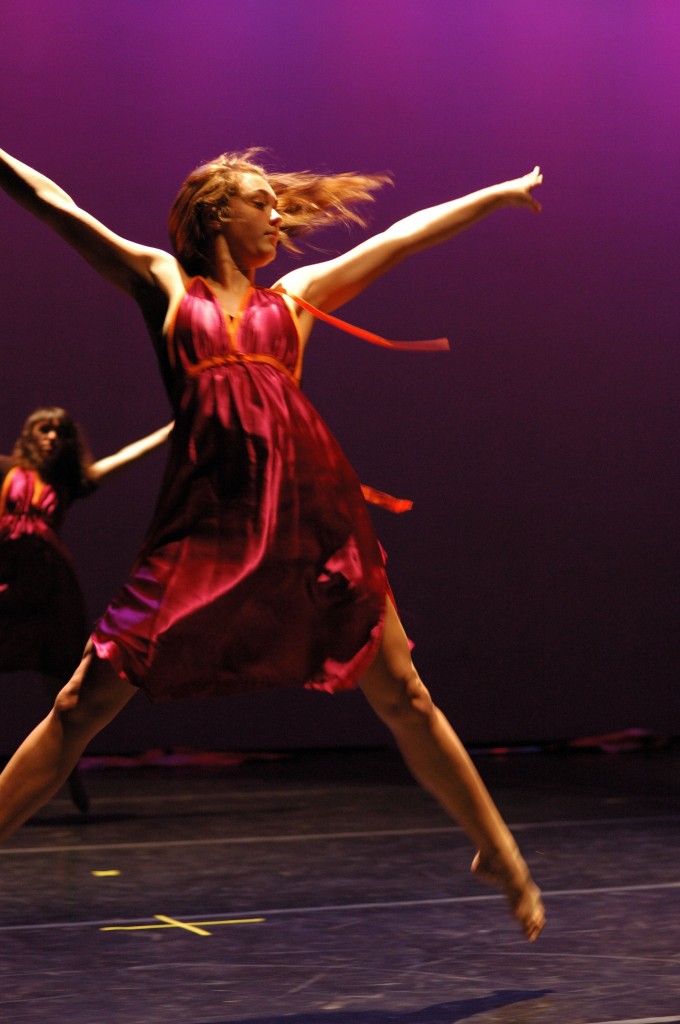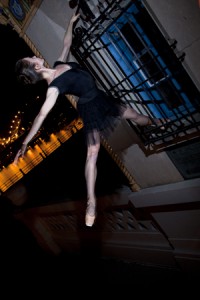
by Emily Kate Long
I was reminded recently of a Zen saying about the three “jewels” of training: great faith, great doubt, and great effort. None of these attributes alone is enough to make an artist—all three must work together in harmony. This month’s post is a look at what happens when the three elements fall out of balance and ways to restore them.
Call it a rut, call it a plateau, call it a crisis—every artist has been in one. It can be as minor as a bad class or as major as utter creative paralysis lasting weeks or more. Whatever the extent, the feelings of being stuck, going backwards, or wandering aimlessly are frustrating. Frustration often begets negative self-talk, and negativity is anything but productive! What’s a dancer to do? Checking in with each of the three jewels is a great place to start when trying to get out of a stuck place.
Every dancer (heck, every person) has strengths and weaknesses. Some dancers love to examine technique but have a hard time opening up onstage. Some are natural performers but find it difficult to pick up or master steps. Yet, an artist needs a well-rounded set of skills, and he or she needs to be able to call on those skills as required. The good news is that we can tap into creativity systematically. We don’t have to be at the mercy of the muse…it just takes a little self-knowledge and self-listening.
Let’s examine the makeup of the three Zen jewels and how each can work in the dancer’s life.
Great Faith
Faith can be identified as great passion, great love, great trust, or great confidence. We need trust in our relationships with teachers, coaches, and coworkers. We need it in the traditions on which ballet technique is built. We need love and passion for the creative act itself—the work being danced and the act of dancing. Most importantly, we need great faith in ourselves.
Sometimes restoring lost faith is simple. Seeing a good performance or dancing a work you dearly love can reignite the creative fire. Sometimes it’s necessary to just get in the studio and dance for the joy of it. Discipline is essential, but there’s also a great deal to be said for regular doses of hedonism. If you don’t love it deep down, why bother? Work done unlovingly feels empty. Worse, work done resentfully can be toxic. Affirmations and reminders—written or otherwise—are good to have around for inspiration. (Pinterest is a great resource for positive affirmations! Use whatever is important or moving to you.) Keeping the company of other dancers whose faith is alive and well can also help build up and strengthen a wavering flame. Everyone knows some dancer whose effervescence, ferocity, or generosity is infectious!
Great Doubt
Doubting, questioning, and examining ourselves is as crucial as trusting ourselves. Doubt inspires us to test our abilities, to look at them with different eyes. Putting oneself outside the comfort zone is a great way to test skills. Does self-confidence, for example, hold up when dancing in a less comfortable environment? If not, what more information or effort is needed to feel confident? Doubt allows us to identify our weaknesses and address them. It helps us assess our progress. What will I work to improve today? Did I progress toward that goal?
It’s important to moderate doubt. Doubts are not always rational, particularly in a profession that rewards perfectionism. Before giving a doubt too much attention, I double-check it. Am I comparing myself to an unreasonable ideal or measuring my progress against a former “me”?
Great Effort
Of course, if loving and knowing our art were enough, the world would be full of balletomanes with no dancers to appreciate. Creativity requires action.
For professional dancers, great effort is practically a no-brainer. The rigors of daily class and rehearsal where we try, fail, and try again to master our craft are obviously effortful. Effort is also manifest in our discipline to continue to practice even when passion or knowledge are momentarily lacking. Some days happen like that…plies at 9:30 are just not that appealing, or even a simple phrase of choreography feels like information overload! Still, we know we must push on to serve a greater goal. Another aspect of effort is the care of our instruments: our bodies, our space, and our company. Maintaining healthy habits in sleep, nutrition, and cross-training requires effort.
Our efforts are informed by faith and doubt. Without faith, you get burnout. Without doubt, effort leads to poorly executed work.
The real key here is to keep all three attributes working in harmony. Carve out space and time for self-listening and self-care in order to meet your creative needs.
I invite you, readers, to share your stories of rediscovery. How did you regain or restore a lost quality? Which is most difficult to maintain?
Assistant Editor Emily Kate Long began her dance education in South Bend, Indiana, with Kimmary Williams and Jacob Rice, and graduated in 2007 from Pittsburgh Ballet Theatre School’s Schenley Program. She has spent summers studying at Ballet Chicago, Pittsburgh Youth Ballet, Pittsburgh Ballet Theatre School, Miami City Ballet, and Saratoga Summer Dance Intensive/Vail Valley Dance Intensive, where she served as Program Assistant. Ms Long attended Milwaukee Ballet School’s Summer Intensive on scholarship before being invited to join Milwaukee Ballet II in 2007.
Ms Long has been a member of Ballet Quad Cities since 2009. She has danced featured roles in Deanna Carter’s Ash to Glass and Dracula, participated in the company’s 2010 tour to New York City, and most recently performed principal roles in Courtney Lyon’s Sleeping Beauty, The Nutcracker, and Cinderella. She is also on the faculty of Ballet Quad Cities School of Dance, where she teaches ballet, pointe, and repertoire classes.





